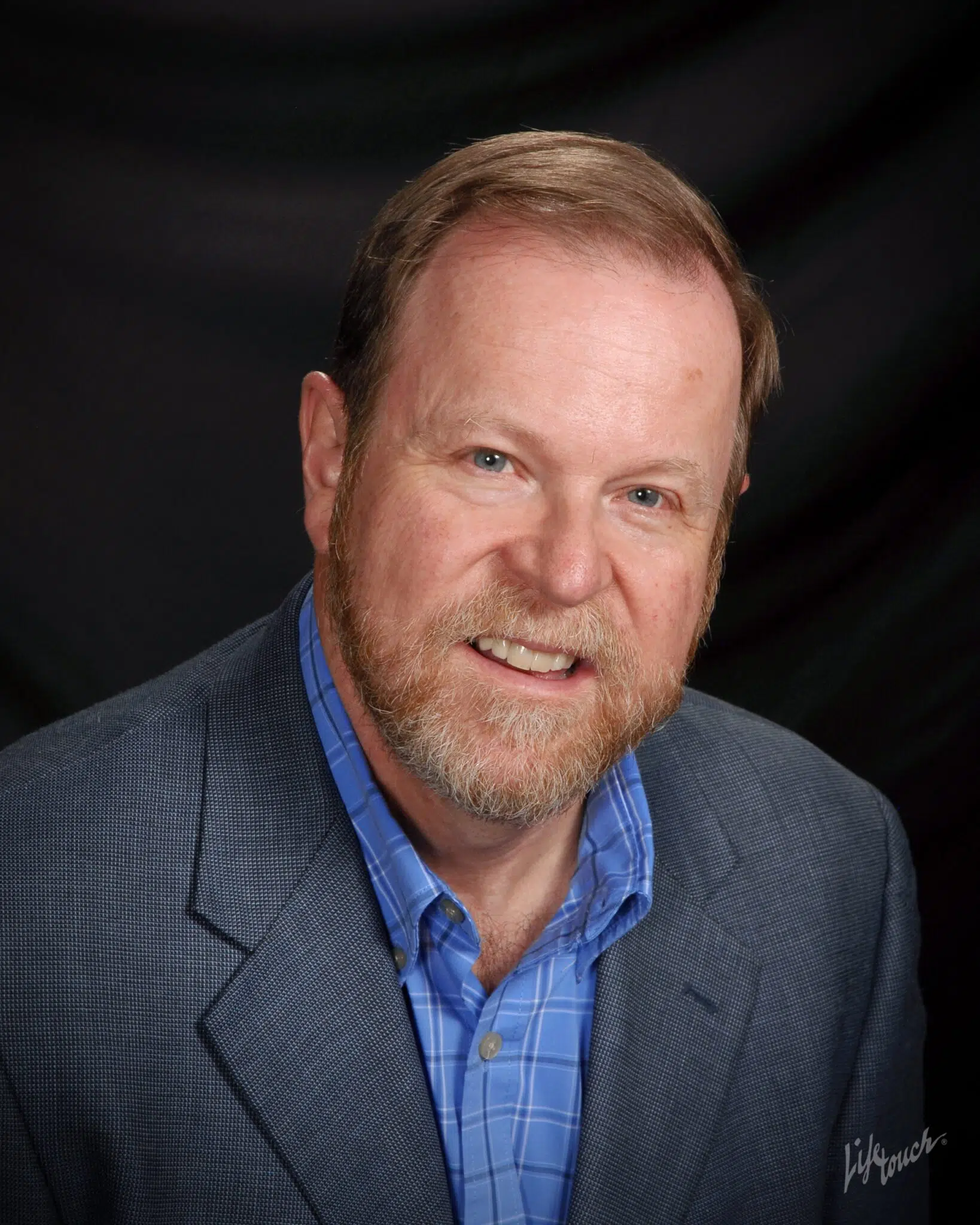Amundson: Career focused on community journalism
Something I’m particularly proud of and passionate about has been my role throughout my career as a community journalist, which I would define as a journalist who is deeply imbedded in the community that is being covered: Understanding and living with the issues a community faces, providing in-depth coverage of those issues and, on the editorial (opinion) side, helping to craft solutions, helping to guide the community to a better place.
While newspapers like the Loveland Reporter-Herald, Longmont Times Call, Durango Herald and BizWest all fit within that definition, the work doesn’t happen by accident. It’s intentional. It’s interesting to note that journalistic organizations in Colorado are starting to grasp that the future of the industry depends upon that close relationship with readers. In doing so, they shouldn’t overlook the foundational work that Colorado newspaper families — the private owners such as the Ballantines of Durango, Lehmans of Northern Colorado, Rawlings of Pueblo, Baranczyks of Salida and others — have done to build those relationships through sound community journalism.
I said at the beginning of this series of columns that I would retell a few stories, and there are so many more that could be retold. But let me try to capture “community journalism” with these examples.
SPONSORED CONTENT
Allumbaugh
In the early days of my career, among the jobs of the cub reporter on a community daily was to call the hospitals and funeral homes to gather the boilerplate of daily life: the admissions and discharges from the hospitals and the obituaries from the funeral homes. Yes, we reported who was in the hospital; in those days, people wanted their neighbors to know when they were in the hospital.
On one such day in the summer, I called the Tracy (Minnesota) Hospital, and the charge nurse gave me the admissions and discharges. Then, she asked me to listen to what was happening in the background. A guy named Roy Allumbaugh was playing a harmonica for patients. He was a resident of the nursing home across the road, and he would come over almost daily to entertain hospital residents.
I asked if I could come to visit with him. And he said yes.
The visit a few days later displayed his talents on not just one harmonica but many, of all shapes and sizes. He would remove his false teeth and play to the enjoyment of those around him.
He invited me to his room across the street where he played some more. He told me his story of being a farmer, a railroad worker in that railroad hub of southwest Minnesota and more. Before I left, he asked if I had a few minutes more, and I did, so he pulled a bunch of Christmas cards out of the drawer of his bedside nightstand and asked me to read them to him.
Not exactly a job for a reporter, but I did it, and he was appreciative.
I wrote a story about him, mostly the harmonica stuff.
And a few days later when making funeral home calls, Roy Allumbaugh popped up among the obituaries.
A few days after that, a visitor to the newsroom who identified as Roy Allumbaugh Jr. came by to share with me the impact of my little feature story on his father in his final days. The newspaper clipping that Roy Sr. had been carrying was barely hanging together; he had folded and unfolded it so many times as he shared it with everyone he encountered.
The simple things can make an incredible impression. And not just on the subject of stories, but on their authors.
Norris Sletten
The police beat was another entry-level duty of the cub reporter. Every day, I would call on the police department, the sheriff’s office and the state patrol office to gather information on crimes, accidents and more.
Capt. Norris Sletten was the commanding officer of the local state patrol office. Through him, I was able to tell the story of the “bear in the air,” the airborne state trooper who enforced speeding laws from a small aircraft. The job was made famous by the now deceased Southwest Colorado resident C.W. McCall, who performed “Convoy.” You remember the lyrics of this CB Radio ballad, I’m sure.
I asked to go up with the trooper in the air, and Capt. Sletten agreed. Little did he know, however, that I had covered the airport commission luncheon just prior to the assignment and that beef stroganoff lunch was not as airworthy and it should have been.
Sletten was ever quick to respond; at my next visit to the State Patrol office, he made sure to give me a paper bag imprinted with “Compliments of the State Patrol.”
Sletten, now deceased, also cut me some slack on another day. On the one and only day that a couple of colleagues and I took our coffee break at the Corner Bar at Main Street and College Drive, Sletten wanted to demonstrate to me, on me, the State Patrol’s first Breathalyzer.
Shaken by that close call, I returned to the coffee shop for my daily break from that point on.
Judges, too
I’ve covered numerous judges over the years, but one particular story stands out, but not for the reason you might suspect.
Walter Mann was the chief judge in the judicial district in Minnesota where I lived. He and his wife Polly were well respected members of the community, professionally, personally and socially.
In those days, it was common, especially for metropolitan police departments, to engage in stings of vice operations such as prostitution. Lo and behold, Judge Mann’s name ended up on the list of “johns” that the Minneapolis Tribune published.
The staff at the newspaper where I worked was hesitant to call him for a comment, so the job fell to me. Mann answered and was forthright with me about it. That was typical of him; he didn’t dodge. He understood his public profile and public responsibility.
His role as chief judge ended, but I understand that he did later serve in a judicial capacity elsewhere in the state.
Times certainly have changed.
Aebleskiver, and all that
In every area of the country where I’ve worked, there are community festivals of note that reporters get tasked to cover. Polska Kielbasa Days in Ivanhoe, Minnesota; Strawberry Days in Strawberry Point, Iowa; Cherry Pie Festival in Loveland.
The one that made the biggest lasting impression, however, was Aebleskiver Days in Tyler, Minnesota.
Aebleskiver is a Danish, ball-shaped pancake. Four cups Bisquick, four eggs, three cups milk were the simple ingredients used by the mostly women of Tyler as they labored over special griddles in the local firehall and produced thousands of the delicacies for the thousands of people who attended the festival.
Served with a honey butter syrup, they were quite irresistible, but I did manage to write feature stories multiple years in a row when I drew this assignment.
I’ve got some Danish ancestry — about one-fourth — but Aebleskiver was not part of our traditions at home. That’s likely because the traditions of both of my Norwegian grandmothers took center stage on our tables and in our cookbooks.
I bought a special griddle from the Tyler hardware store, and another just like it from a Washington, D.C., hardware store on a visit there, and another from Tyler for my mother, and another from Tyler for my mother-in-law. Those latter two are now in the hands of grandkids who make Aebleskiver their breakfast of choice when visiting. For me, I’ve made hundreds if not thousands of batches over the years. And every time I think about those reports that I shared with readers, and wonder how many might have added the recipe to their favorites.
Courts of first, or last, resort
Over the course of a career in journalism, I’ve been to court numerous times — always at my instigation. I’ve been fortunate to have never been sued. I’ve lost just one case. And I once won two court cases on different subjects on the same day.
Journalists go to court to enforce public laws that guarantee public access to information. I’ve been fortunate to work for organizations willing to go out on a financial limb and bring court cases to enforce open meetings, open records and law enforcement records, which fall under a separate category of state laws.
A number of notable First Amendment and public access lawyers work in this region of Colorado, one of whom represented my employer as well as national organizations such as television networks.
Curiously, the case I lost occurred on the same set of facts as one that I had won — an effort to enforce state law that requires public entities to disclose names of finalists for high-level positions such as city manager or police chief. In one case, Larimer County District Court ordered the release of information that had been hidden by the city of Loveland. In the other, LaPlata County District Court denied access to information sheltered by the city of Durango. District courts are not required to follow precedent from another district.
In addition to working through the courts to enforce statewide laws on public records or meetings, journalists often work through the legislative process to create new laws that guarantee new access. Seldom, however, do any of those laws contain sufficient teeth to guarantee access. In the end, journalists and the public have to rely upon the good will of governmental officials, which in my observation has been in short supply over my 51 years in the business.
I do take pride in the creation of state law that requires local governments to record their executive sessions. During my year as president of the Colorado Press Association, we set out to create a new category of record — namely a digital copy of conversations at executive sessions. Then, if a citizen decided to challenge whether an executive session was conducted appropriately and legally, a judge could listen to that recording “in-camera,” or in private, to determine if the law was violated. If violated, the record would be released.
It was 2001. Loveland attorney Stan Matsunka was the president of the state Senate as a Democrat; he carried the bill on the Senate side. Broomfield attorney Shawn Mitchell, a Republican, was the House sponsor. The bill passed with one negative vote, and Gov. Bill Owns signed it.
The new law had several provisions, including the requirement that sufficient details of executive sessions be announced before the meeting without violating the intent of the closed session, the recording process itself and legal fees to prevailing private parties. The state school boards association asked at the last minute to include a fourth provision: that governments hiring top executives be directed to release the names of finalists for those positions, described in testimony as the final three candidates.
That passed overwhelmingly, only to have the University of Colorado Board of Regents blow it out of the water the next time it hired a new president by declaring just one finalist — a practice that has been adopted by numerous public entities that thumb their collective noses at the public.
The end
I hesitated to use that subhead over these final paragraphs of this column. I recall that a Lutheran pastor friend wrote “The End” on the envelope in which he left his final funeral instructions, and the presiding minister used those two words as the basis of his sermon at the funeral. Death, he said, is but the beginning of something better.
So I should have instead used the old copy reading symbol — 30 — which was used when journalists typed their manuscripts on single sheets of paper. The — 30 — signaled the end of the piece and told typesetters that this was, indeed, the end of the piece.
So while this marks the end of my official, 51-year career in an industry that I’ve loved, it’s not the end of my days of reading and researching and writing. That work will be for me, now, and maybe from time to time I’ll share it more widely.
— 30 —
Read Ken’s other columns in this 6-part series.
Truth: Stranger than fiction
https://bizwest.com/2024/01/05/truth-stranger-than-fiction/
Collaborative journalism: A joint effort to protect a community
https://bizwest.com/2024/02/02/collaborative-journalism-a-joint-effort-to-protect-a-community/
Amundson: Not always what it seems
https://bizwest.com/2024/03/08/amundson-not-always-what-it-seems/
Amundson: Stories some don’t want told
https://bizwest.com/2024/04/02/amundson-stories-some-dont-want-told/
Amundson: Local events take a toll
https://bizwest.com/2024/05/03/amundson-local-events-take-a-toll/
Amundson: Career focused on community journalism
https://bizwest.com/2024/05/30/amundson-career-focused-on-community-journalism/
Amundson to retire from BizWest after 51 years in journalism
https://bizwest.com/2024/05/31/amundson-to-retire-from-bizwest-after-51-years-in-journalism/
This is the final segment of a six-part series of columns detailing notable news stories from the past 51 years, leading up to Ken’s retirement.





